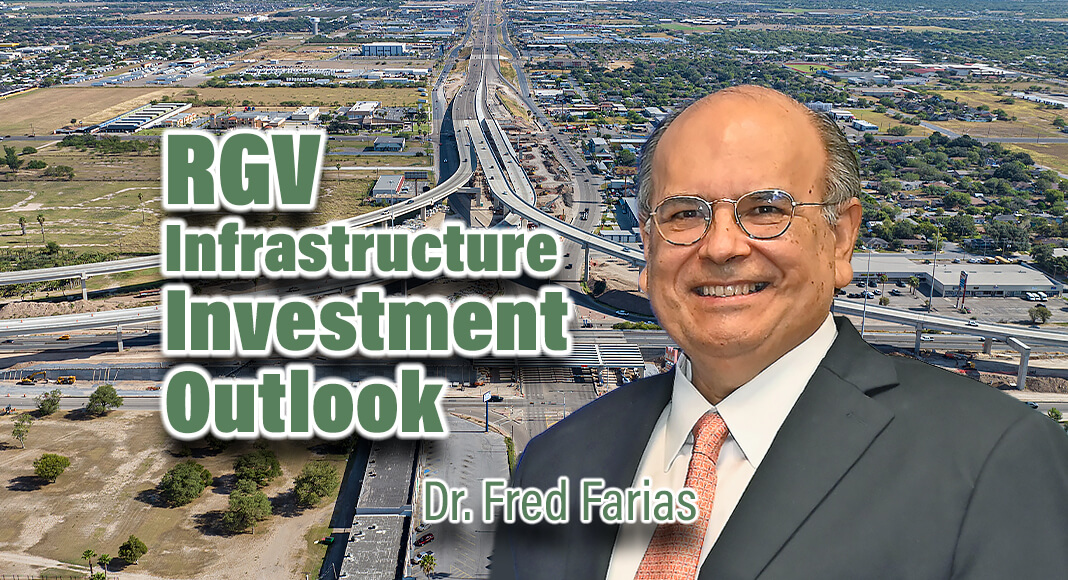
Texas Border Business
By Roberto Hugo González
The Rio Grande Valley has long been a region of economic and demographic dynamism, a gateway for trade, and a hub of cultural exchange. However, like any area experiencing rapid growth, it faces challenges, notably in its infrastructure.
The recent visit by J. Bruce Bugg, Jr., Chairman of the Texas Department of Transportation (TxDOT), to McAllen highlighted the state’s commitment to address these challenges. This event was highlighted by comments from Dr. Fred Farias, the Chairman of the McAllen Chamber of Commerce Government Affairs Council, who spoke on the implications of this visit and the planned massive funding increase for the area’s transportation infrastructure.
Introduced by David Deanda, president of Lone Star National Bank, Chairman Bugg focused on the pressing concerns tied to the Rio Grande Valley’s accelerating population growth. According to him, the region is projected to double its population by 2045. This explosive growth necessitates comprehensive planning and development in the transportation sector, thus leading to the importance of partnerships between local entities and state departments like TxDOT.
Dr. Fred Farias, who chairs the McAllen Chamber of Commerce Government Affairs Council, welcomed Chairman Bugg’s insights. He expressed optimism about the plans shared by TxDOT, emphasizing the exceptional growth expected for the Rio Grande Valley within the bigger expansion of the Texas population.
One of the standout points from Farias’ comments was the announcement of a $3.6 billion allocation specifically for the Rio Grande Valley’s infrastructure. Governor Greg Abbott, per Dr. Farias, has mandated the allocation to focus on this critical region due to its key role in the overall growth of the state of Texas. The funding is expected to transform roads, improve public transport, and facilitate freight and commercial movements, thus boosting economic activities in the region.
Farias also touched upon the importance of citizen involvement in shaping transportation policies. Chairman Bugg’s commission, as per Dr. Farias, values the local understanding of transportation needs in policy formation. In that sense, this collaborative approach between state agencies and local communities is expected to yield more effective solutions tailored to the specific needs of the Rio Grande Valley.
As per Chairman Bugg, the planned investment in the Rio Grande Valley’s transportation infrastructure is more than just a short-term solution to traffic bottlenecks or inefficient public transport. It is a long-term strategy aimed at fostering sustainable growth. With $3.6 billion focused squarely on transportation, the Rio Grande Valley will likely see the implementation of more advanced, resilient, and adaptive infrastructure, laying the groundwork for future economic prosperity.
The Rio Grande Valley stands at a critical stage. Its rapid growth presents challenges but also unparalleled opportunities. The state’s commitment, as exemplified by Chairman J. Bruce Bugg, Jr.’s visit and the $3.6 billion allocation, offers a promising roadmap for tackling these challenges head-on.
Dr. Fred Farias’ comments give valuable local insights into how these plans and investments are seen by community leaders who will play a key role in their successful implementation. “With collaborative planning and massive investment, the region is well-positioned for a future of sustained growth and development,” Dr. Farias finalized.














